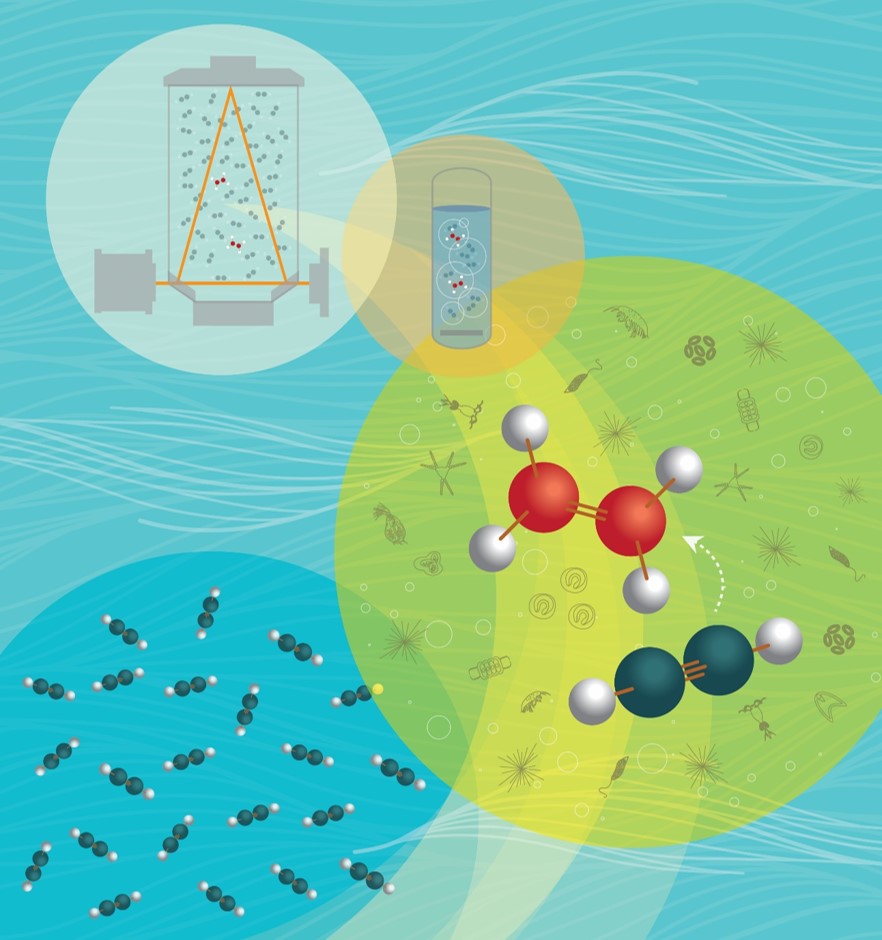
FARACAS Concept
Because of the difficulty in resolving the large variability of N2 fixation with current methods which rely on discrete sampling, the development of new methods for high resolution measurements is highly desirable. We present a new method for high-frequency measurements of aquatic N2 fixation by continuous flow-through incubations and spectral monitoring of the acetylene (C2H2, a substrate analog for N2) reduction to ethylene (C2H4). In this method, named “Flow-through incubation Acetylene Reduction Assays by Cavity ring-down laser Absorption Spectroscopy” (FARACAS), dissolved C2H2 is continuously admixed with seawater upstream of a continuous-flow stirred-tank reactor (CFSR) in which C2H2 reduction takes place. Downstream of the flow-through incubator, the C2H4 gas is stripped using a bubble column contactor and circulated with a diaphragm pump into a wavelength-scanned Cavity Ring Down laser absorption Spectrometer (CRDS). Our method provides high-resolution and precise mapping of aquatic N2 fixation, its diel cycle, and its response to environmental gradients, and can be adapted to measure other biological processes. The short-duration of the flow-through incubations without preconcentration of cells minimizes potential artefacts such as bottle containment effects while providing near real-time estimates for adaptive sampling. We expect that our new method will improve the characterization of the biogeography and kinetics of aquatic N2 fixation rates. See Cassar et al. 2018.


You must be logged in to post a comment.